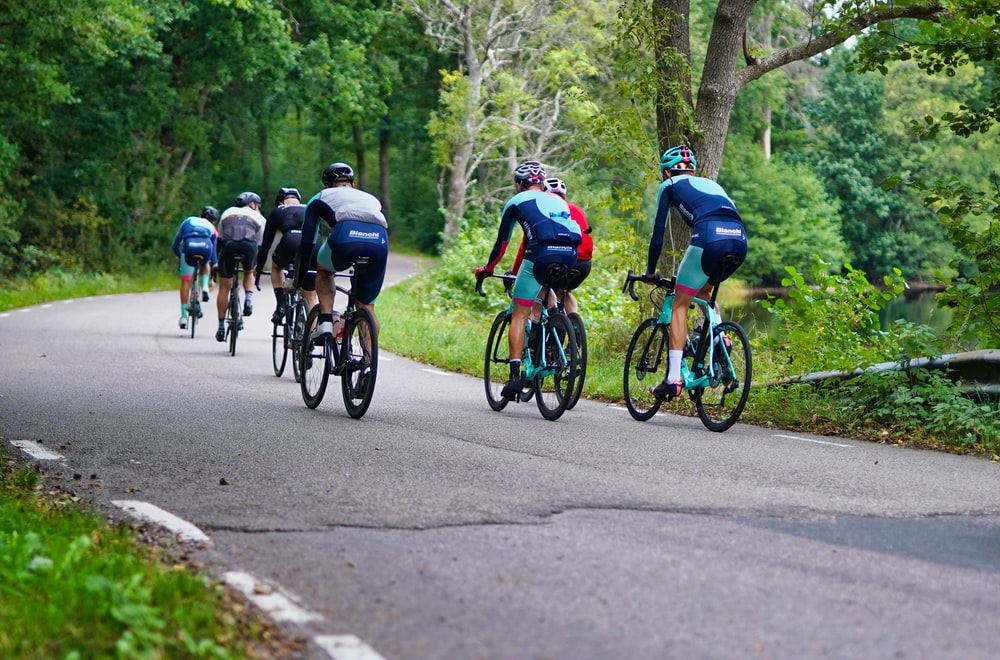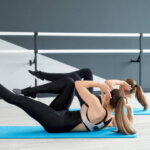Group rides can be a great “think outside of the box” way to train for the cycling portion of an upcoming triathlon. For experienced athletes, group riding can be a staple. However, if you’re new to group riding they can be intimidating when throwing yourself into a group full of experienced cyclists. While there isn’t a one size fits all tip for heading into your first group ride, you can go prepared knowing the general rules of riding in a pack of other cyclists. Being prepared to clip in for your first group ride will help increase your skill level, ride safely with others, improve your fitness, and overall allow you to enjoy riding with a group more.
Take a look at these top 4 essential etiquette tips for riding in a group:
1. Practice Safe Riding
When you ride solo, you only have to worry about yourself and your surroundings. When you’re riding in a group you also have to take into account all of your fellow riders and their safety on the road. A lapse in concentration while riding not only puts your safety at risk, but also your fellow riders. It’s important to keep in mind traffic laws as well. Be familiar with state or local bicycle traffic laws before you hit the road so you know the rules when it comes to riding in your group. If you are using a TT-style bike (triathlon bike), it is important to ride only on the hoods instead of in the aero position. This allows you to have more control over your bike as well as quicker access to your brakes, if needed.
2. Keep in Mind General Group Etiquette
Going hand-in-hand with practicing safe riding is keeping in mind that when you’re riding as a group, you’re riding as one cohesive unit. While it would be ideal for all riders to be totally in sync for the ride, it’s just not physically possible which is why it’s so important to keep your eyes and ears out for any subtle directions during your group ride. Because you’re an important part of your group you’ll also need to let your fellow riders if you notice a hazard or change within the ride through vocal commands or physical movements.
3. Understand the Intended Pace of the Ride
Before heading out to your group bike ride, do your research ahead of time so you know the intended pace of the ride. Many group rides are called “no drop rides”. This is the type of ride where no one gets left behind should a cyclist not be able to hold the pace or if they have an unexpected issue with their bike. These types of rides are great rides to start with and feel less intimidating than other rides which can feel more aggressive.
Once you become comfortable in “no drop rides”, you can move to other types of group rides. These can be great for cyclists that want to simulate the physical and mental demands of race day. Keep in mind that should you get dropped or get a flat, you are on your own.
Each individual gathering to participate in the group ride will have his or her own unique cycling dynamics. That’s why it’s important to understand what to expect, be prepared, and behave properly to ensure that the dynamics of the ride are not disrupted. No matter what your skill level, doing a group ride is beneficial. While each rider is different and has different training goals, every cyclist is out there working hard to become a stronger athlete.
4. Be Prepared
It is important to come to any group ride prepared. Don’t be that cyclist who arrives to the group ride without fluids, nothing to change a flat tire or – isn’t ready on time. If the ride is at 6pm – this usually means “wheels down” at 6pm and you’re ready to go. It is inconsiderate to show up at 5:55, start getting your shoes and helmet on and expect the rest of the group to wait for you to be ready. Here is a checklist of things for you to consider when preparing for your group ride:
- Be sure your bike is in proper working order
- Have your helmet, cycling shoes, and sunglasses and gloves (if you wear them)
- Bike pump – if you are going to pump up before the ride (and you should), get there early to give yourself enough time to do so before the ride is scheduled to begin
- Fuel for on the bike – and maybe a little extra in case you are out longer than planned
- Know the route – just in case you are dropped due to a flat tire or another reason, you don’t have to rely on someone else to stay back with you
- Cell phone – this is for emergencies only
- Spare tube, levers and CO2 or frame pump in case you experience a flat tire. If you don’t already know how to change a flat tire, learn this! Be self-sufficient
- Cash – you might need more fuel, you might need a ride back to the start – it’s best to have money just in case you need it.
Looking for other cycling tips to maximize your training plan? Contact me today!
Train Right, Tri Right!
Coach MJ







